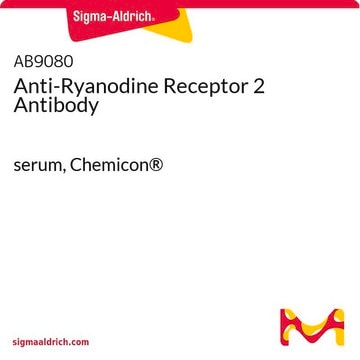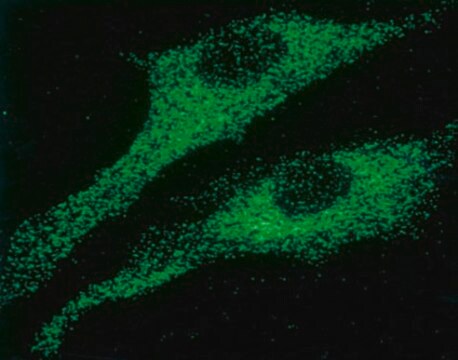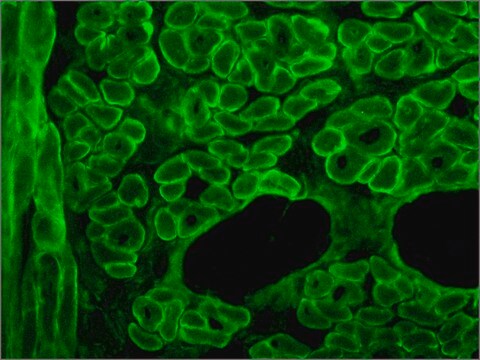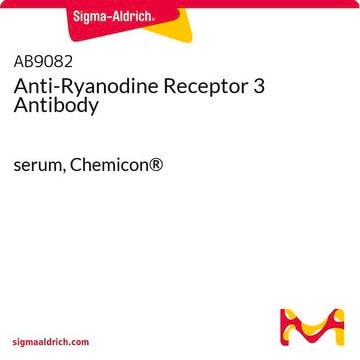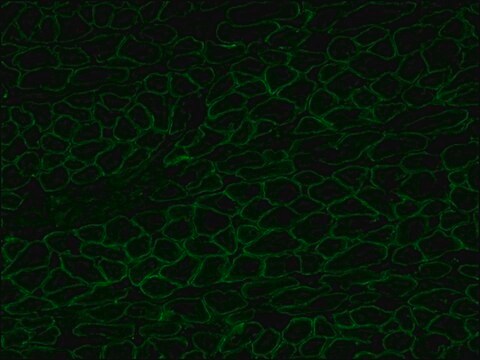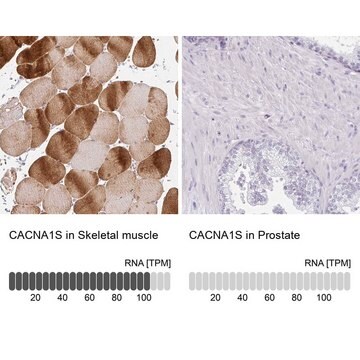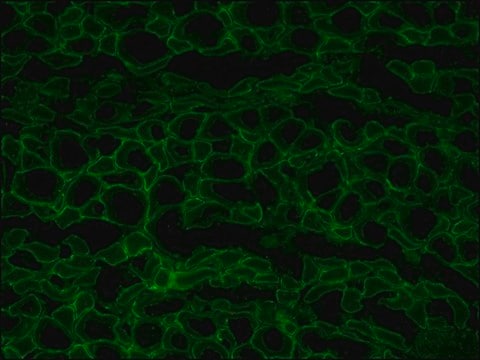AB9078
Anti-Ryanodine Receptor 1 Antibody
serum, Chemicon®
Sinónimos:
Anti-CCO, Anti-KDS, Anti-MHS, Anti-MHS1, Anti-PPP1R137, Anti-RYDR, Anti-RYR, Anti-RYR-1, Anti-SKRR
About This Item
Productos recomendados
origen biológico
rabbit
Nivel de calidad
forma del anticuerpo
serum
tipo de anticuerpo
primary antibodies
clon
polyclonal
reactividad de especies
human, mouse, rat
fabricante / nombre comercial
Chemicon®
técnicas
immunocytochemistry: suitable
immunohistochemistry: suitable
western blot: suitable
Nº de acceso NCBI
Nº de acceso UniProt
Condiciones de envío
dry ice
modificación del objetivo postraduccional
unmodified
Información sobre el gen
human ... RYR1(6261)
Especificidad
Inmunógeno
Aplicación
Immunocytochemistry: 1:1,000
Immunohistochemistry: 1:1,000 overnight at 2-8°C using a fluorescently labeled secondary antibody. Suggested fixative is 4% paraformaldehyde in 0.1M PBS (one hour). Suggested permeablization method is 0.05% Triton X-100 in dilution buffer. Suggested blocking buffer is 10% normal goat serum (or same host as your secondary antibody) and 1% BSA in 0.1M PBS. Suggested dilution buffer is 1% normal goat serum (or same host as your secondary antibody) and 1% BSA in 0.1M PBS.
Optimal working dilutions must be determined by the end user.
Nota de análisis
Western blot = adult mouse skeletal muscle (adult mouse cardiac muscle will be negative).
IHC = adult mouse cerebellum Purkinje cells (adult mouse cerebellum granular cells will be negative).
Información legal
Not finding the right product?
Try our Herramienta de selección de productos.
Código de clase de almacenamiento
10 - Combustible liquids
Clase de riesgo para el agua (WGK)
WGK 1
Punto de inflamabilidad (°F)
Not applicable
Punto de inflamabilidad (°C)
Not applicable
Certificados de análisis (COA)
Busque Certificados de análisis (COA) introduciendo el número de lote del producto. Los números de lote se encuentran en la etiqueta del producto después de las palabras «Lot» o «Batch»
¿Ya tiene este producto?
Encuentre la documentación para los productos que ha comprado recientemente en la Biblioteca de documentos.
Nuestro equipo de científicos tiene experiencia en todas las áreas de investigación: Ciencias de la vida, Ciencia de los materiales, Síntesis química, Cromatografía, Analítica y muchas otras.
Póngase en contacto con el Servicio técnico
